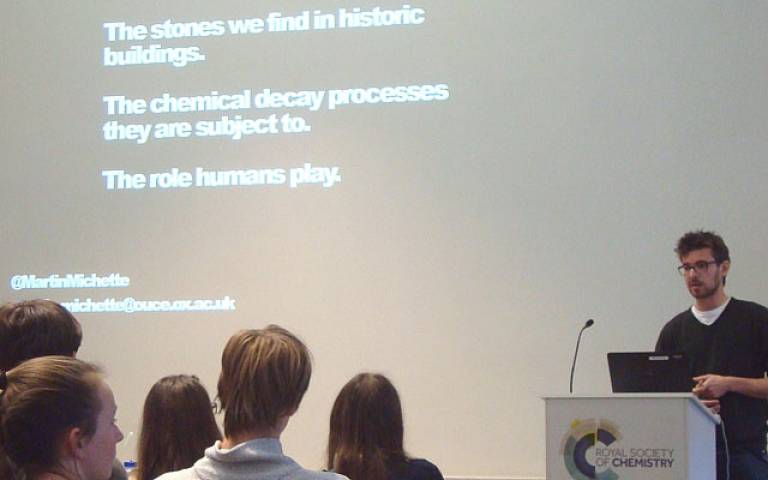SEAHA and the Royal Society of Chemistry engage with schools
31 October 2016

The event, run in conjunction with the Royal Society of Chemistry, showcased the use of scientific methods by SEAHA researchers, to understand our heritage and prolong its lifespan. The topics highlighted how this science links to fundamental topics covered during A-Levels as well as the many different career paths opened up by studying science at 3rd Level. Practical demonstrations were carried out to allow the participants to obtain some hands-on experience of heritage science The presentations and talks fell into the following themes –
1. Environmental effects on heritage – such as how how the temperature and humidity effect collections in museums or how the weather effects outdoor heritage.
2. Chemical effects on heritage – such as the types of chemical reactions that decay collections and artworks, and how we can use chemistry to limit this decay
3. Novel tools that help further our understanding of heritage or potential treatments – such as using synchrotron radiation sources to probe deeper than anyone has before to understand exact chemical reactions or using imaging and different energy wavelengths to identify materials and understand the types of decay reactions present in artworks.
Regarding the upcoming event, Cristina Fonseca, Education Coordinator at the Royal Society of Chemistry said:
“The Royal Society of Chemistry aims to promote, support and celebrate chemistry. We want to enthuse the next generation and show them the place of chemistry in everyday life and how interdisciplinary science and other fields can be. Collaborating with SEAHA will allow us to inspire students and help them see the connection between science and heritage.”
One of the main aims of the Centre for Doctoral Training is to engage the public and show the novel and cutting edge scientific methods in use to study and interpret heritage. SEAHA students study a wide range of topics, such as looking at protecting the stone from decay at the Tower of London, understanding the decay of paper in historic libraries such as the Library of Congress in the USA, and prolonging the lifetime of plastic artworks at the Victoria and Albert Museum and Tate.
Mark Kearney, second year SEAHA doctoral student and organiser of the event, said:
“SEAHA’s commitment to generating public awareness regarding Heritage Science is demonstrated by this event, run in conjunction with the Royal Society of Chemistry. Events of this type benefit the school students by showing them the practical application of the knowledge taught, during the A-Level cycle, outside of the prerequisite experiments. It also helps expand their awareness of the many possibilities opened by studying a STEM subject at Third-level.
“The event was also of benefit to the SEAHA students who gain valuable experience dissecting their projects into fundamental concepts that can then be easily presented to many different audiences, as well as developing practical demonstrations of these concepts.”
About 60 school children attended on the day, and the SEAHA Mobile Heritage Laboratory will also be in attendance in the courtyard of Burlington House.
Links
 Close
Close

